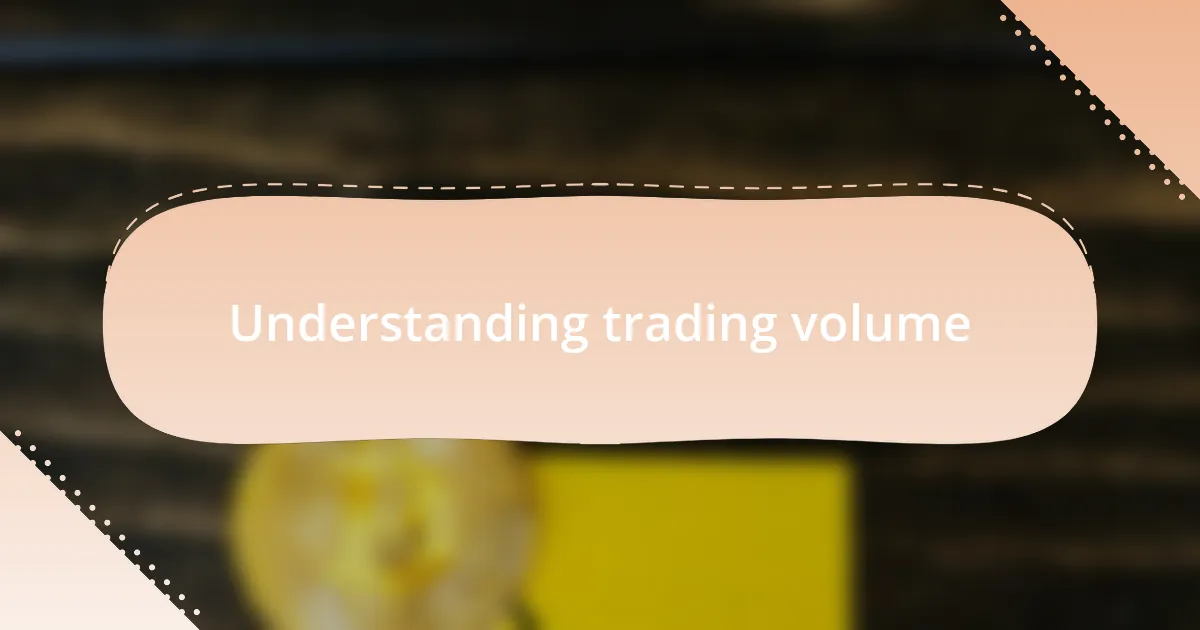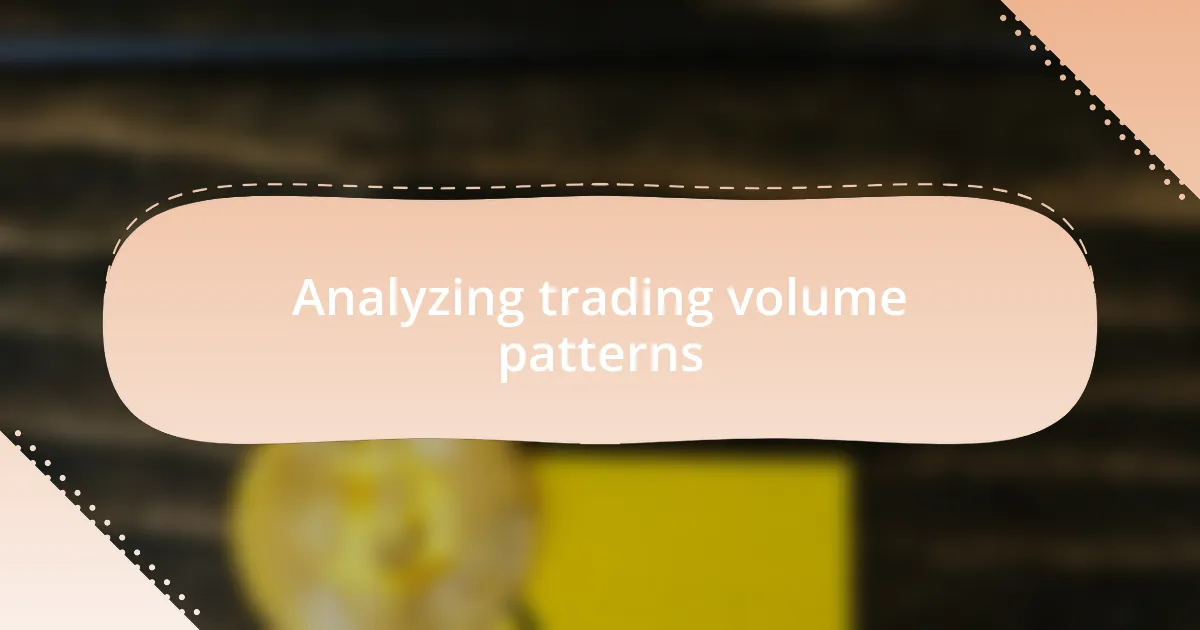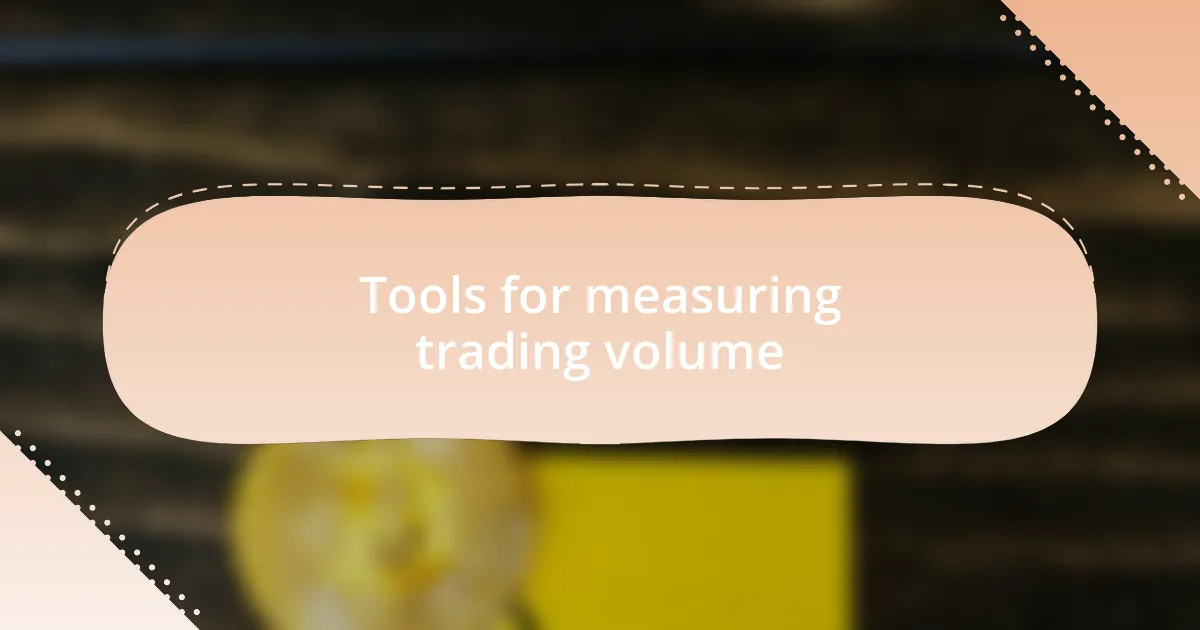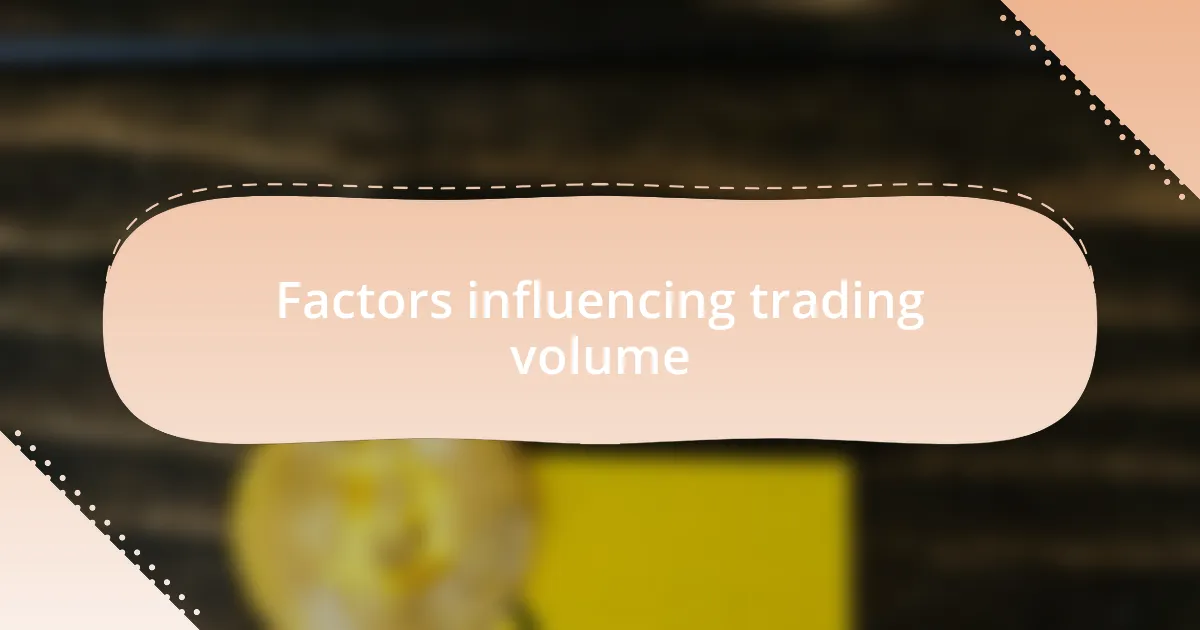Key takeaways:
- Trading volume reflects market sentiment and can indicate potential price movements, with high volume often signaling strong conviction among traders.
- Analyzing volume patterns, such as increased activity at specific times or around key price levels, can provide insights for future trading opportunities.
- Essential tools for measuring trading volume, like volume indicators and On-Balance Volume (OBV), enhance market analysis and decision-making.
- Market sentiment, news events, and overall liquidity significantly influence trading volume and trader behavior in the cryptocurrency market.

Understanding trading volume
Trading volume is essentially the lifeblood of any cryptocurrency market, indicating how many units of a specific asset are being bought and sold over a given time period. I remember tracking a particular coin and noticing its volume spike dramatically; it felt like a rush, hinting at potential price movements. Have you ever experienced that jolt of excitement when you see a sudden surge in trades? It’s a signal that something important might be happening.
Understanding trading volume goes beyond just raw numbers; it also helps us gauge market sentiment. When I observe low volume during a price increase, I often feel cautious, as it might suggest a lack of confidence among traders. Conversely, a sharp increase in volume can indicate strong conviction and market enthusiasm, almost like a stampede toward a new opportunity. How often do we overlook these signals in our quest for the next big trade?
From my experience, analyzing trading volume in conjunction with price movements can reveal deeper insights into market trends. For instance, I’ve seen prices soar accompanied by significant volume, reinforcing that bullish momentum. At the same time, a price drop on increasing volume can serve as a warning sign, signaling that traders are eager to sell. Isn’t it fascinating how much information is encapsulated in these seemingly simple numbers?

Analyzing trading volume patterns
When I dive into analyzing trading volume patterns, I often look for recurring behaviors that can indicate future price movements. I recall a time when I noticed a coin consistently exhibited increased volume on Fridays. It struck me as a clue that traders were repositioning themselves for potential weekend price swings. Have you ever picked up on similar trends in your trading practices?
One pattern that intrigues me is the relationship between volume and price thresholds. I remember a point where a cryptocurrency approached a key resistance level, and the volume surged. This surge felt electric—it not only validated the breakout attempt but also provided a clear signal to enter the market before the momentum picked up. Isn’t it thrilling when you recognize those pivotal moments before they unfold?
Revisiting my analysis techniques, I often use volume indicators to gauge the strength of market trends. Recently, I analyzed a situation where volume decreased even as prices rose. It left me feeling unsettled, suggesting a potential reversal ahead. I’ve learned that these patterns tell a story that’s crucial to follow—what stories have your own trading volumes whispered to you?

Tools for measuring trading volume
When I evaluate trading volume, I rely heavily on a few essential tools that guide my decision-making process. One of my favorites is the volume indicator, typically found on most trading platforms. It visually represents buying and selling activity over a specific time frame. I recall a moment when this indicator helped me spot an emerging trend; the increasing volume signaled a strong buyer interest, making it a prime time to enter the market.
Another powerful tool I often use is the On-Balance Volume (OBV) metric. This tool weighs volume against price changes, allowing me to determine whether money is flowing into or out of a cryptocurrency. I distinctly remember an instance where the OBV showed rising values despite stagnant prices, signaling hidden strength in the asset. Have you ever used OBV to discover potential opportunities that others might overlook?
Additionally, I find that combining trading volume data with candlestick patterns enriches my analysis. The interplay between these two tools tells a more nuanced story about market sentiment. For example, I once noticed a bullish engulfing pattern coinciding with a sharp increase in volume—it felt like finding a secret roadmap guiding me to a profitable trade. How do you integrate different tools to enhance your trading strategies?

Factors influencing trading volume
When I think about the factors influencing trading volume, market sentiment stands out as a significant player. For instance, during times of market euphoria, I’ve witnessed trading volumes spike dramatically, reflecting the excitement and fear of missing out (FOMO) among traders. Have you ever felt that rush when everyone around you is trading? It’s a powerful motivator that can drive volumes to new heights.
Another crucial factor is news and events. I remember vividly when a major regulatory announcement took place—it sent shockwaves through the market. As trading volume surged, it really illustrated how external factors can sway trader behavior. Have you ever noticed how quickly the mood shifts with just a few headlines? It’s fascinating how directly our trading decisions can be influenced by such dynamic information.
Finally, the overall structure of the cryptocurrency market plays a role as well. For instance, liquidity can dictate how easily assets are bought and sold without causing a significant price change. I once observed a lesser-known altcoin where limited liquidity resulted in erratic volume fluctuations. It made me appreciate the importance of understanding the trading environment. How do the conditions of the market shape your trading experience?